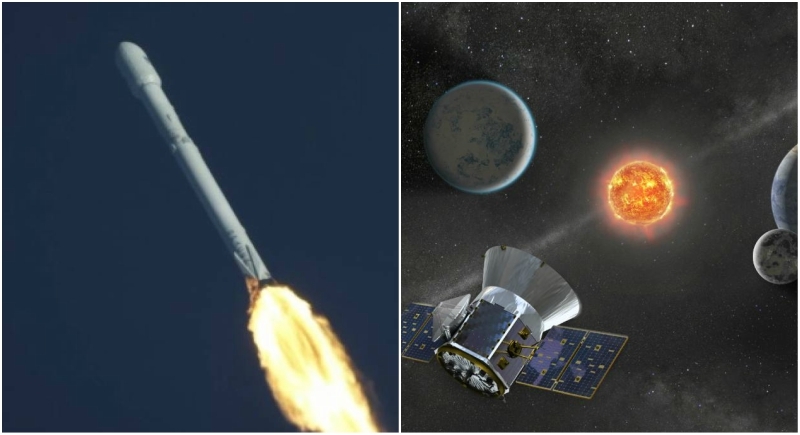And the search begins! NASA successfully blasts off ‘alien-planet hunter’- TESS into high orbit
Florida, April 19: And the search begins! On Wednesday, NASA with the back of SpaceX has successfully blasted off its TESS Spacecraft- A new exo-planet hunting telescope into high Earth orbit. SpaceX launched the Transiting Exoplanet Survey Satellite, or TESS – with the launch on the Falcon 9 rocket.

With the help of TESS, NASA aims to look forward for potentially habitable planets beyond the solar system.
How?
The TESS will spend two years scouring 85% of the sky and hundreds of thousands of its brightest stars. The satellite, about the size of a washing machine, will scan the stars for signs of periodic dimming, which may mean that planets are orbiting around them. It is hoped that Tess will find around 20,000 exoplanets - planets outside our solar system - with more than 50 expected to be Earth-sized.
TESS will accomplish its observations by using the sole science instrument onboard: a package of four wide-field-of-view CCD cameras with a low-noise, low-power 16.8 megapixel CCD detector. Each camera has a 24° x 24° field of view, a 100 mm (4 in) pupil diameter, a lens assembly with seven optical elements, and a bandpass range of 600 to 1,000 nm. When functioning together – as designed – the four cameras have a 24° x 96° field of view.
Tess is looking for the ones that are Earth-like and close enough to allow scientists to study them further.They are particularly interested in those habitable zones of a star, where temperatures are right for water and, therefore, human life.
Once Tess discovers the planets, strong telescopes will be used to learn more about them, looking for signs such as oxygen, methane, carbon dioxide and water vapour.
How is TESS different from Kepler?
TESS will perform a very different kind of mission, unlike NASA’s Kepler. Where Kepler was a prolonged, deep, and narrow field observatory that looked continuously at specific stars in one quarter of 1% of the sky at an optimal range of 2,000 to 3,000 light years distance, TESS will perform a wide- and shallow-field survey covering 85% of the sky with an optimal distance stretching to 300 light years.
You need to know this…
Over its primary 2 year mission, TESS will observe about half a million stars in an area 400 times larger than the Kepler mission and is expected to find 20,000 exoplanets – including 500-1,000 Earth-sized planets and Super-Earths.
These planets will be added to the growing number of known exoplanets. According to NASA’s Exoplanet Archive hosted by CalTech, as of 12 April 2018, there are 3,717 known exoplanets with 2,652 of those found by the Kepler Space Telescope.
Every 13.7 days, when TESS swings closest to Earth, the spacecraft will downlink its observation data to scientists at MIT who will process it and make it available to other scientists and the public.